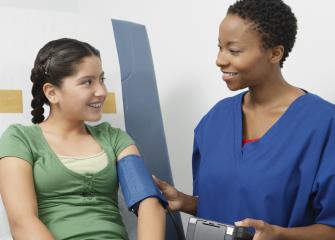Summary
Please enable javascript to play this video.
| Quick Facts: Licensed Practical and Licensed Vocational Nurses | |
|---|---|
|
$59,730 per year
$28.72 per hour |
|
| Postsecondary nondegree award | |
| None | |
| None | |
| 657,800 | |
| 3% (As fast as average) | |
| 16,900 | |
What Licensed Practical and Licensed Vocational Nurses Do
Licensed practical nurses (LPNs) and licensed vocational nurses (LVNs) provide basic medical care.
Work Environment
Licensed practical and licensed vocational nurses work in a variety of settings, including nursing and residential care facilities, hospitals, physicians’ offices, and private homes. Most work full time.
How to Become a Licensed Practical or Licensed Vocational Nurse
Licensed practical and licensed vocational nurses must complete a state-approved educational program, which typically takes about 1 year. They must be licensed.
Pay
The median annual wage for licensed practical and licensed vocational nurses was $59,730 in May 2023.
Job Outlook
Employment of licensed practical and licensed vocational nurses is projected to grow 3 percent from 2023 to 2033, about as fast as the average for all occupations.
About 54,000 openings for licensed practical and licensed vocational nurses are projected each year, on average, over the decade. Many of those openings are expected to result from the need to replace workers who transfer to different occupations or exit the labor force, such as to retire.
State & Area Data
Explore resources for employment and wages by state and area for licensed practical and licensed vocational nurses.
Similar Occupations
Compare the job duties, education, job growth, and pay of licensed practical and licensed vocational nurses with similar occupations.
More Information, Including Links to O*NET
Learn more about licensed practical and licensed vocational nurses by visiting additional resources, including O*NET, a source on key characteristics of workers and occupations.
 United States Department of Labor
United States Department of Labor









